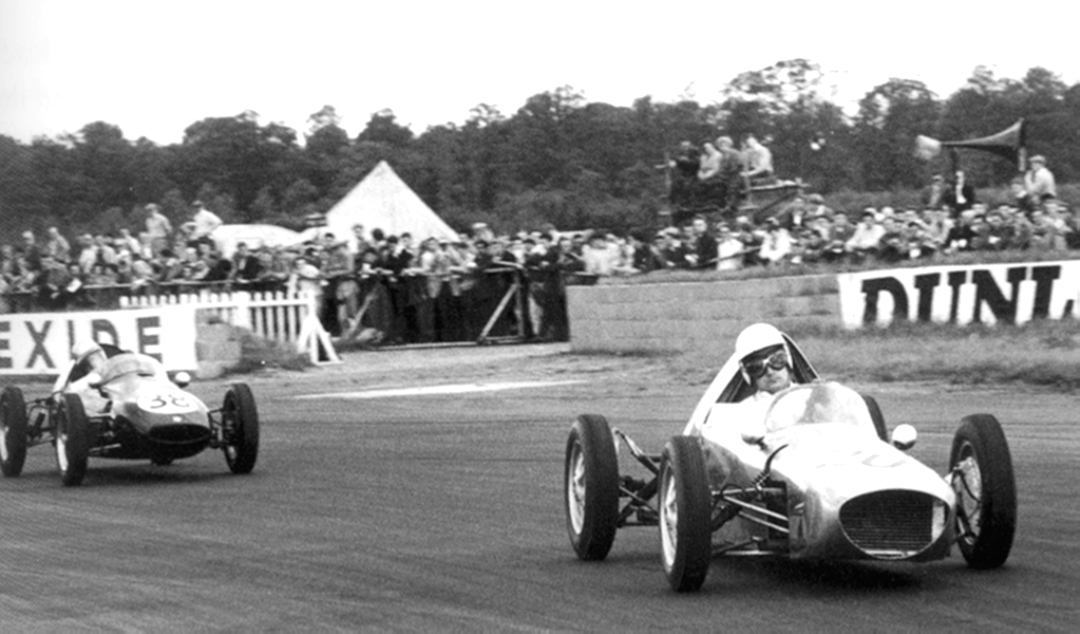When Formula Junior came to the UK shores, to replace the now out-dated 500-cc Formula Three racing, I felt that it was time to build a single-seater chassis for myself. It was at the same time I had decided to leave my £18-a-week job at Rotax and set up my own tuning shop, Lawrence Tune. The previous season, 1959, in racing terms had seen my winning the Freddie Dixon Trophy, the British Automobile Racing Club’s (B.A.R.C.) national drivers’ award for the most successful driver in a marque sports car. Winning this award led other racers to approach me to tune their cars. They wanted to be as fast as me. My competition car was a 3-year-old Morgan, TOK 258, which I had prepared with a group of friends in a “lock-up” garage. I’m not sure that my timing was quite right for my new venture, as I was newly married and my wife was pregnant expecting our first child. Money was very tight, but I was confident of success and thought I could earn sufficient cash to keep the family going. I was also confident of my driving ability and felt if I had a decent car, I could compete with the best of them.
Formula Junior was devised by an Italian Count, Johnny Lurani; it was a formula that promised inexpensive racing cars. It had been successful in Italy and other European countries with cars like the Osca and Stanguellini. The rules were quite simple, to purchase or build your own chassis and use running gear— suspension, gears, and final drive—from a production road car. Engines could be 1,000-cc or 1,100-cc; the latter would incur a weight penalty. The Italians used, in the main, Fiat parts. My car was to be constructed in accordance with these rules. I had taken notice that the Stanguellini had only been beaten once and was a very fast car, particularly in a straight line. However, I did want to adopt the “new thinking” of putting the engine behind the driver, unlike the front-engined Italian cars. The frame was made of similar tubing to that I had used with the Rotax MG’s, the suspension and gearbox were VW, and the engine was a Ford 105E.
No Subscription? You’re missing out
Get immediate ad-free access to all our premium content.
Get Started



